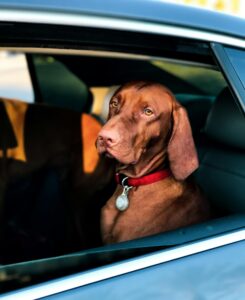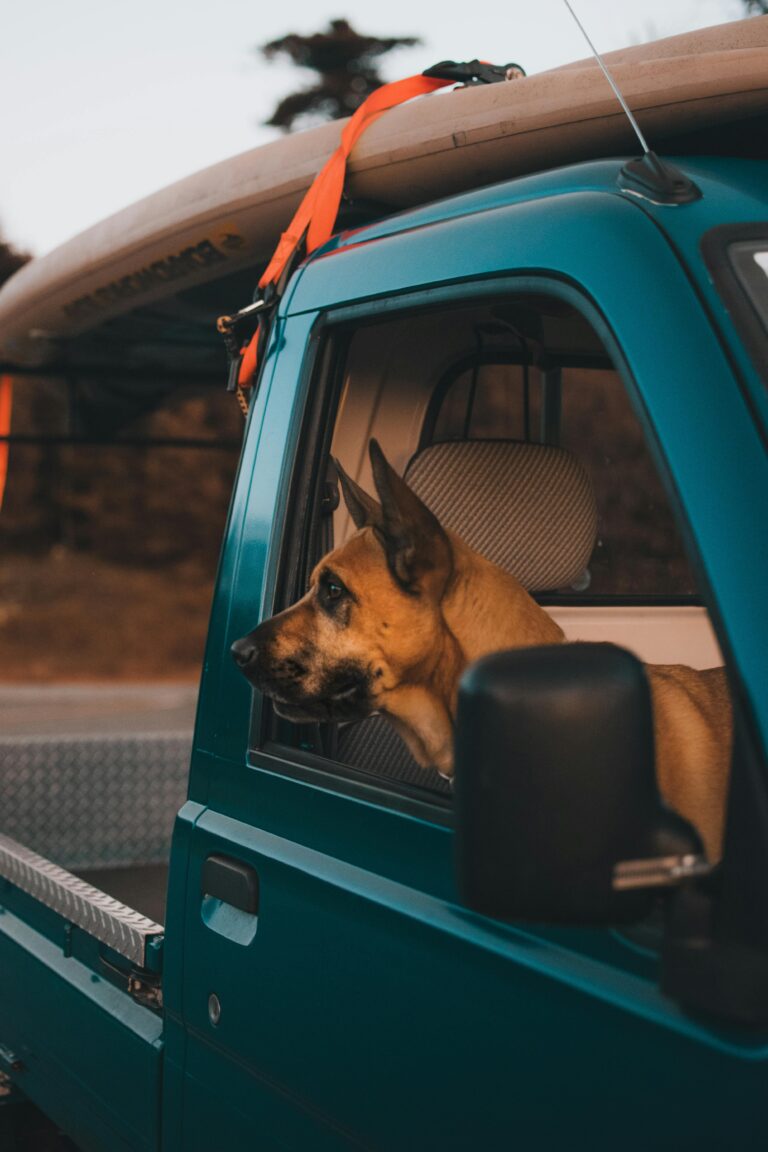Car Rides Should Be Peaceful — Not Panic or Chaos
Summer means more car trips for your dog — whether it’s to the park, vacation spots, training sessions, or family gatherings. But for many dogs, the car is anything but calm. From barking and pacing to whining or trying to climb into your lap, poor car behavior can turn every trip into a stressful mess.
Luckily, with consistency and leadership, your dog can learn to see the car as a structured, relaxing space.

Why Dogs Struggle in the Car
Unwanted car behavior often stems from:
- Lack of boundaries or expectations
- Overexcitement due to associations (e.g. park, vet, etc.)
- Anxiety or motion sickness
- Inconsistent rules — sometimes they ride calm, sometimes not
- Too much freedom or attention during rides
The fix? Clarity, structure, and repetition.
Start With Calm Entry and Exit
How your dog enters and exits the car sets the tone for the ride:
- Have your dog sit before jumping in
- Wait for a release command before entering or exiting
- Don’t let them pull or jump ahead of you
- Use leash guidance if needed to control pace and position
These small moments reinforce your leadership and prevent anticipation overload.
Use a Crate or Seatbelt Attachment
Dogs that pace, climb, or bark often benefit from physical boundaries:
- A travel crate keeps them secure and calm
- Seatbelt harnesses limit roaming while allowing ventilation
- Hammock-style back seat barriers also reduce anxiety
A confined dog is usually a more relaxed dog — and they travel safer, too.
Avoid High Energy Before Car Time
Many owners unintentionally build excitement before a ride by:
- Using an excited tone of voice
- Saying “Wanna go for a ride?!”
- Moving fast or hyping up the leash
Instead, stay neutral. Practice obedience or place work before loading up. Calm entry leads to a calmer mindset in the vehicle.
Address Barking and Whining With Structure
If your dog barks or vocalizes:
- Do not soothe or talk back — it reinforces the behavior
- If safe, apply a leash correction or firm “no”
- Redirect their focus with a “down” or calm command
- Cover windows with a shade if external stimuli overstimulate them
If barking persists, return to short rides and rebuild calmness in smaller increments.
Use Place or Down in the Car
Teaching your dog to lie down and remain there can transform rides. Practice:
- “Down” command followed by “stay” or “place” in the back seat
- Treating and calmly reinforcing duration
- Correcting only if they pop up without permission
- Ending the ride only after calm behavior is sustained
Repeat until lying down becomes the default.
Decompress Before and After
After arriving at your destination, give your dog a moment to pause before exiting:
- Don’t immediately release with excitement
- Use obedience at the car door — “sit,” “wait,” etc.
- Exit only when your dog is calm
And after returning home, allow for decompression time on “place” to reinforce emotional regulation.
Final Thoughts: Calm Car Behavior Reflects Overall Leadership
If your dog views the car as a free-for-all, it means they need stronger direction from you. The car is not a playground — it’s an extension of your training space.
Practice calm loading, reinforce stillness, and make car rides another opportunity to build trust, control, and reliability — all summer long.

